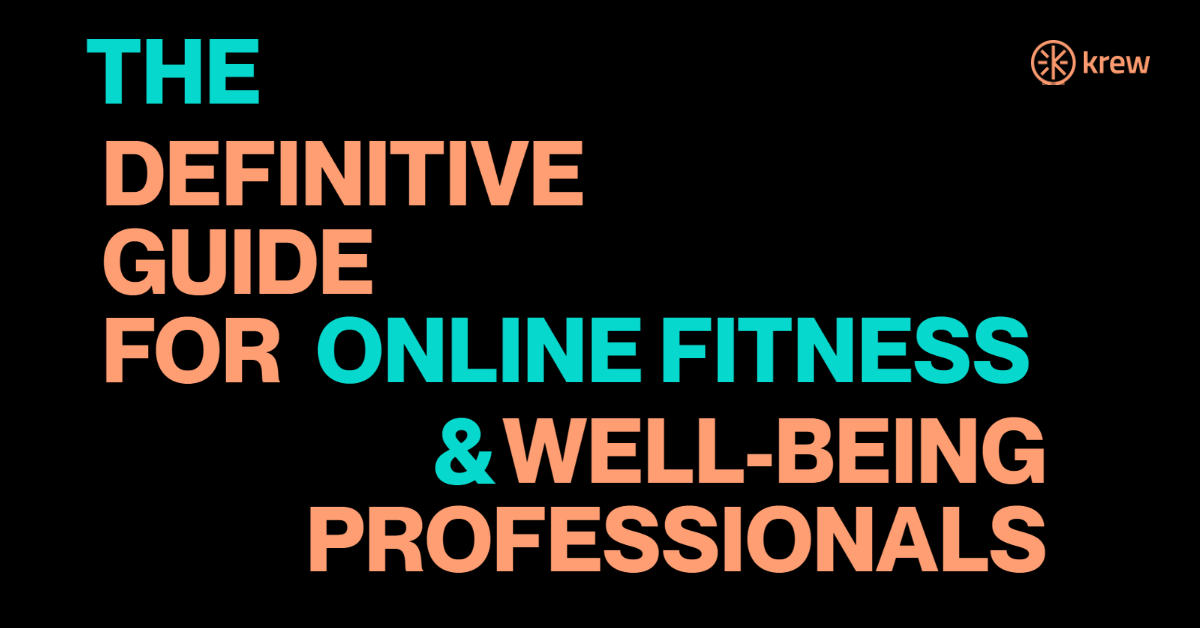As challenging as the overnight transition to online fitness seems, it also presents professional coaches with a wide range of opportunities. Coaches can help clients from around the world, offer unlimited spots in their classes, and host sessions that cater to flexible schedules - all with zero investment on gym equipment or space rental. Collectively, these factors have the potential to complement or even completely overtake in-person business. However, as coaches had to hastily transition their businesses online, many did not invest time to research, brainstorm and strategize, but rather were forced to rush into implementation. Many have not been able to overcome startup pains and even several of those who did, have plateaued and struggled to scale up.
With this article we want to create the definitive guide to online training for fitness and wellbeing professionals. We’ve taken real data from across the industry to help you structure and price your offering to create a great online class experience.
Let’s dive right in!
Step #1: Identify Your Niche
Undoubtedly, the type of workout is crucial to the turnout of an at-home workout, so picking and refining your niche is the first step towards a successful online transition.Begin with your broad fitness area - yoga, for instance - and offer a variety of targeted classes to see what works best with the online format. As you test different versions of your classes, you might discover for instance that yin yoga is most popular at the end of the work day. Once you run a few tests, settle on a niche that you can excel at - and where there’s strong participant enthusiasm. It helps that participants are becoming more open to trying new routines: 64% have tried a new style of fitness class during Covid, while only 36% stuck to their pre-COVID ways of working out.
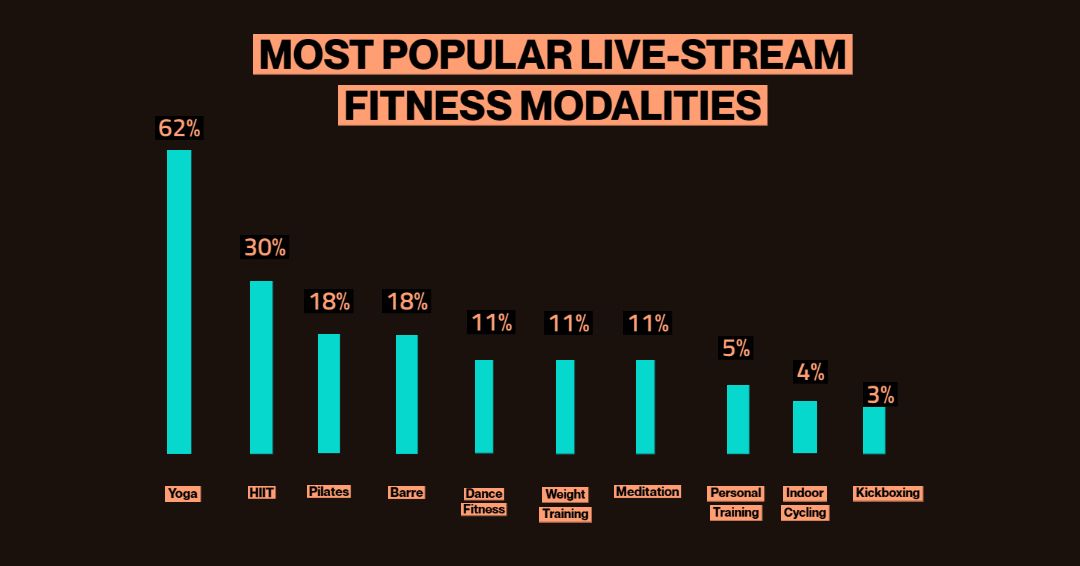
Unsurprisingly, as digital fitness has exploded in popularity, the fitness modalities that are less equipment-dependent have emerged as the most popular. While yoga consistently tops as the most popular type of online workout, strength and cardio are quickly catching up and garnering a lot of interest..
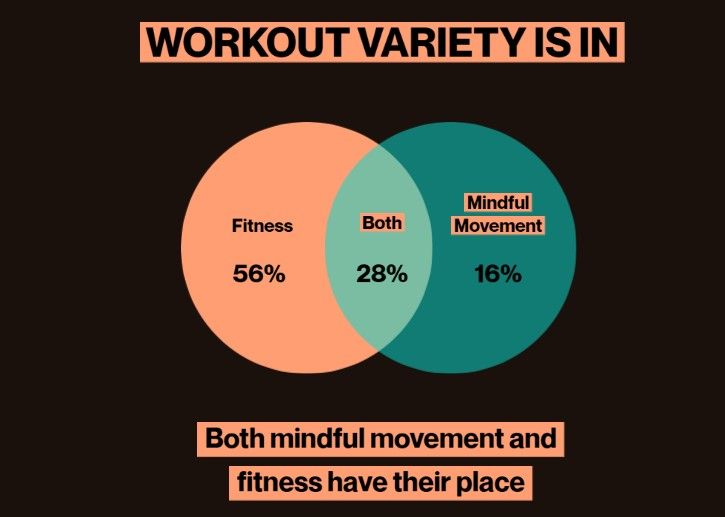
But don’t be discouraged if your area of expertise doesn’t appeal to everyone; there is a place for both high-intensity workouts as well as more restorative kinds, and research shows that most people believe that they complement each other. While there will always be a demand for variety and choice in the online space, focus on finding your niche and providing value to your clients.
In order to stay differentiated in the sea of digital fitness, it’s important that once you’ve picked a niche, you stay up to date on the latest trends. Be open to redefining your niche if required so you can maintain your unique selling point (USP) to remain ahead of the competition.
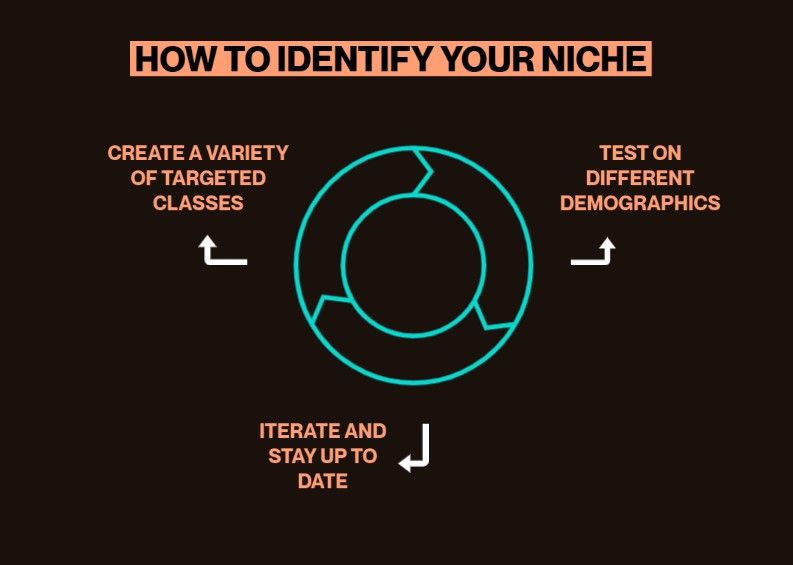
Step #2: Draw up a Schedule
Another important step when it comes to creating a solid strategy is to draw up a schedule that is likely to create the most engagement. This includes deciding on details such as time of day, length of class and frequency of sessions each week. Since the work-from-home model often blurs the line between work and family life, live-streamed workouts should optimise for shifts in routine to increase attendance in each class.
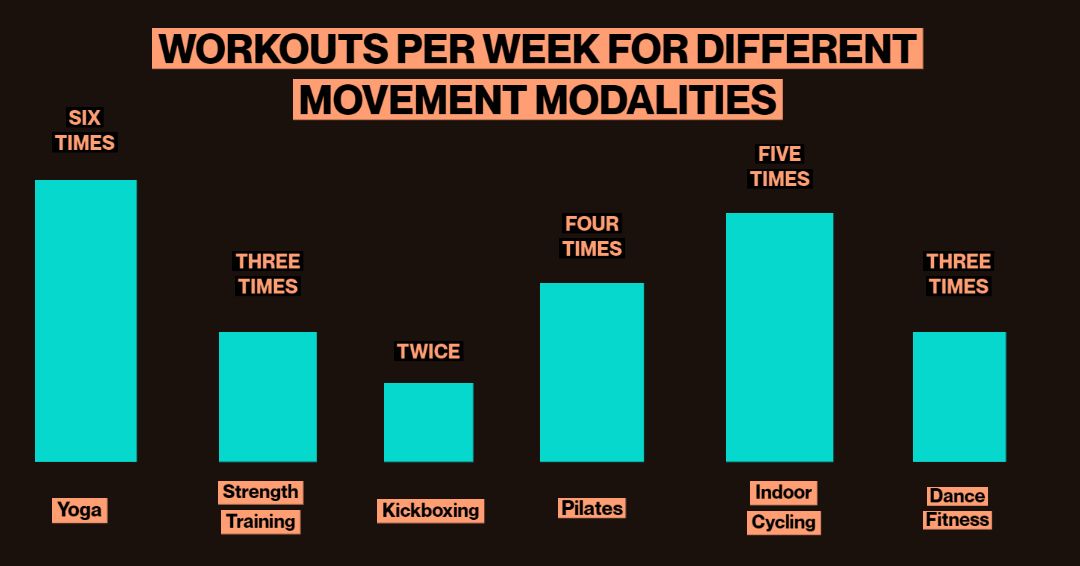
While some movement modalities such as strength and conditioning can only realistically be done every other day, others like yoga or meditation are daily practices. Therefore, determining the frequency of sessions per week is crucial to the success of any program.
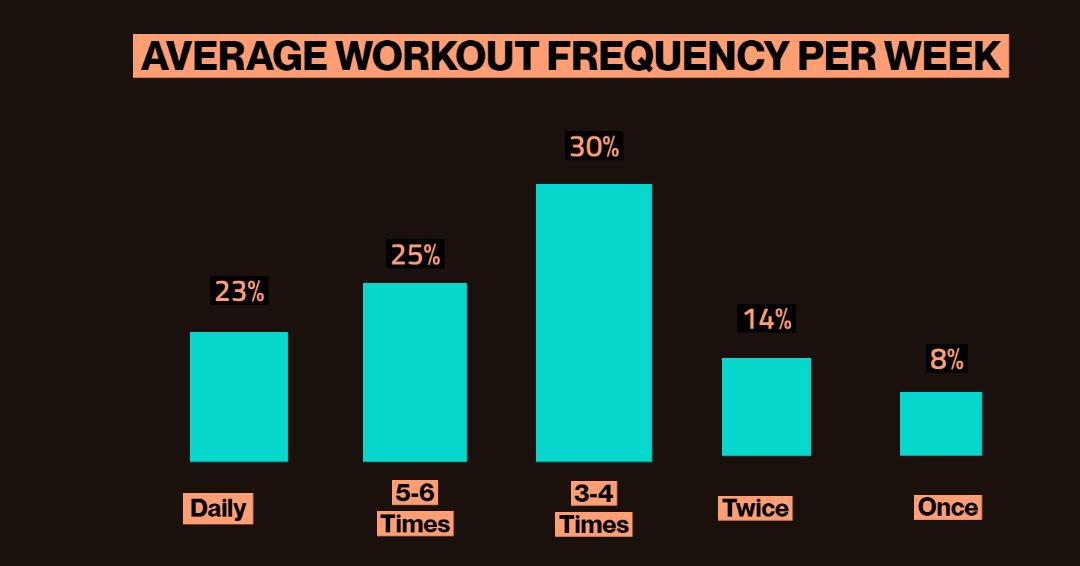
For best results, think of ways to make specific days more intense than others to allow for recovery and variety. So, if most people workout 3-4 times per week, you could choose a Thursday, for instance, to plan the most intense session to allow for 1-2 sessions of preparatory conditioning beforehand.
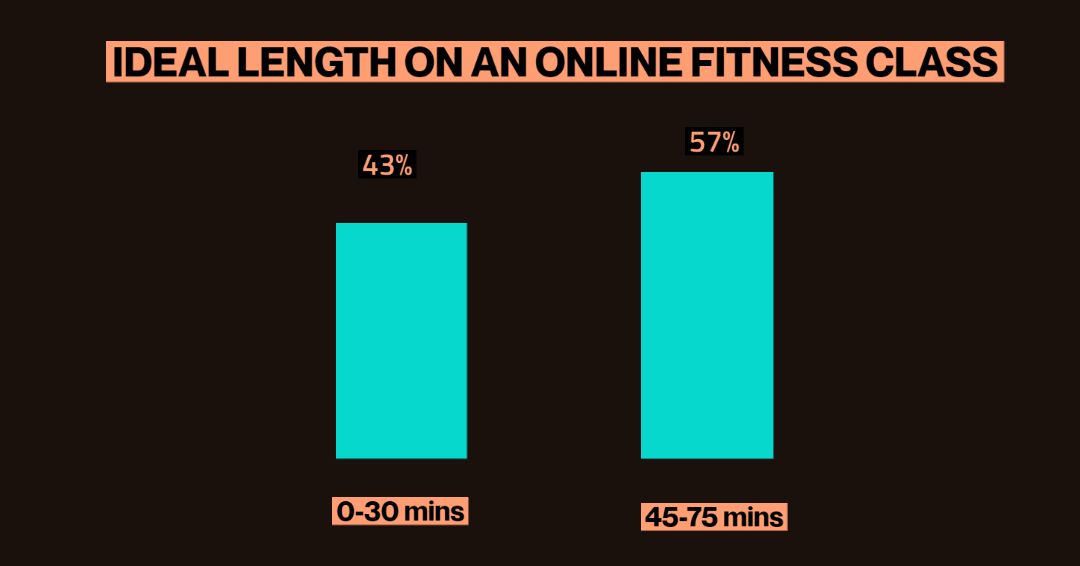
Finding a way to deliver an effective workout within a condensed time frame, could ultimately determine the consistency and commitment that clients are willing to invest in your program. Research shows that 57% percent say the ideal length of a virtual class is 0-30 minutes, while 43% prefer classes that are between 45-75 mins in length. From business executives to young mothers, different demographics require different class durations, finding a way to fit a workout into your client’s routine is crucial, so take the effort to get plenty of feedback from them.
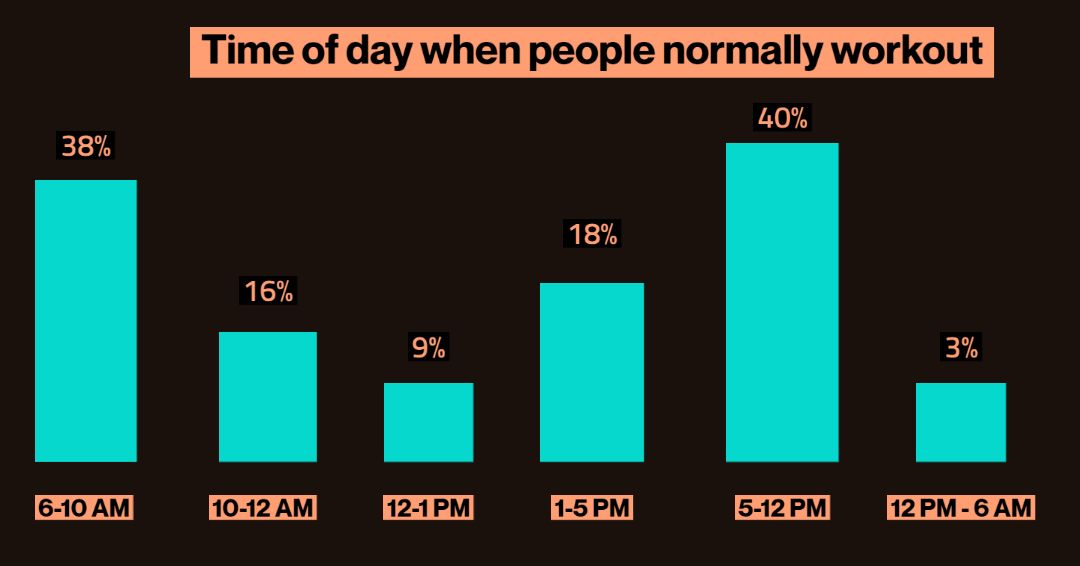
From early risers to executives who prefer to squeeze in a workout during lunchtime, different days of the week call for different class timings. Research shows that engaged customers are 5 times more likely to stay loyal to a brand. While hosting multiple sessions a day might mean that all classes don’t fill up in the same way, the impact of keeping multiple time slots open can make a difference to turning a one-off trial into a regular loyal client. In the following section we’ll see how they could be channeled into non-peak hours at reduced fees to create a multi-tiered fee structure for different homogeneous demographics.
Step #3: Pricing Structure
The next step is to decide on a price structure that best suits the type of service for your business model and clients as well. In the online space, most people tend not to list their prices upfront, in an attempt to dissuade money from being a determinant of entry, but often clients can assume that that it would be too expensive and not sign up at all.
While customers don’t expect online workouts to be free, pre-recorded workouts are generally expected to be cheaper than live-streamed workouts, to account for the additional value that real-time feedback and encouragement from the coach and community provide. On average our research shows that there’s a 50% reduction fee for virtual classes, with the average cost of an online class around $12. So, for example, if an in-person class costs $20, then a live-stream workout could cost $10 and a pre-recorded workout could cost $5.
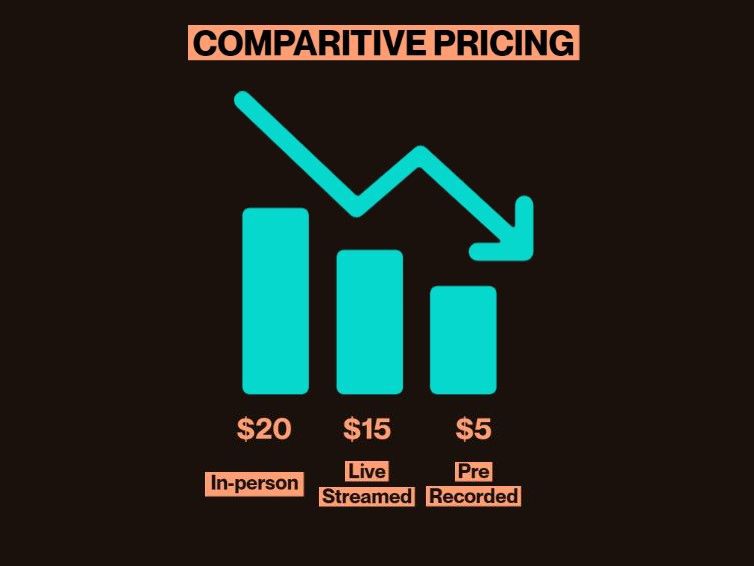
While a majority of online trainers offer packages of unlimited group classes for $81-100per month, a range of other factors such as primary demographics of clients and average frequency for that specific type of workout play a huge role too!

So what allows you to charge more?
We’ve found that coaches who possess the following key traits are able to charge more, attract a larger client base and receive more referrals.
Trait #1 Experience
Experience provides clients with the assurance that you’re qualified to handle injuries, suggest effective modifications as well as help them reach their goals safely and effectively. Sometimes, clients seek testimonials to be convinced that you’re worth the price tag. So, it helps that at Krew, you can import pre-existing reviews, as well as upload media directly to your profile to showcase your track record of jaw-dropping client transformations!

Trait #2 Qualifications
Certifications provide you with confidence in your abilities as they require you to invest time and effort into honing the skills required to be an effective coach. With access to credentials and testimonials displayed on Krew’s profile, clients feel comfortable trusting the guidance of coaches who are specifically trained to handle their injuries, limitations, or requirements.
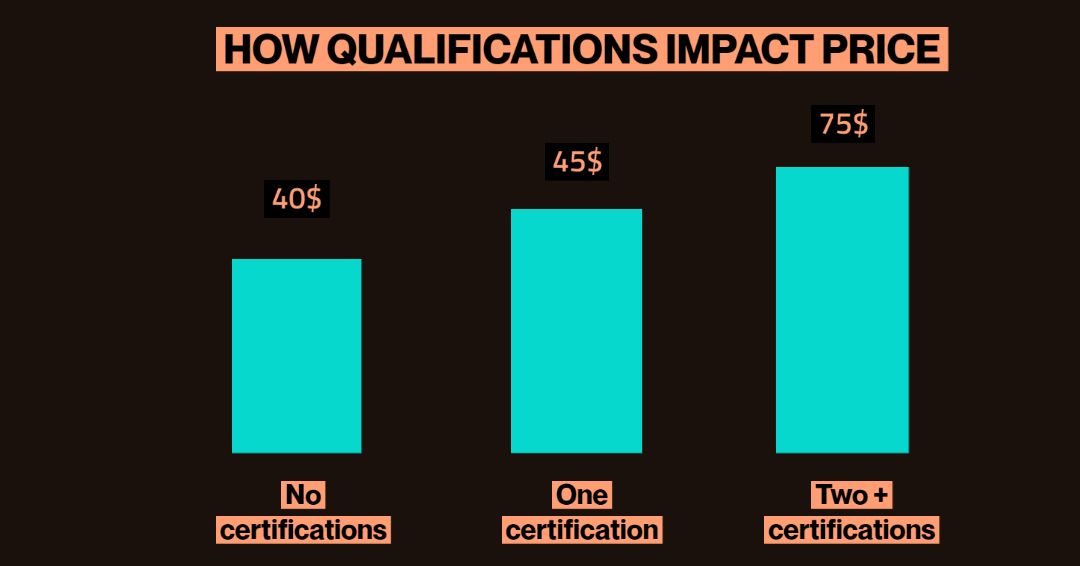
Interestingly, coaches who had no certifications, who were athletes or long-time practitioners of their style of fitness earned roughly the same per hour as the ones with one certification. The ones with two or more certifications on the other hand, earned significantly more, since they signify the hours of effort required to obtain rigorous certifications. In short, the more qualified the coaches are, the more they earn and the more number of clients they tend to have.
Trait #3 Specialisation
Working in a more specialized environment, such as in corporate wellness or those with health conditions can make you stand out from the crowd. While some demographics require you to charge less, they might more than make up for this by the amount of times they want to work with you, your flexibility, or the format of the classes.. On the other hand, people are willing to pay a premium for seniors, and corporate wellness. Building a brand around your specialization will help attract more clients who face similar problems, and you will be uniquely qualified to help them.
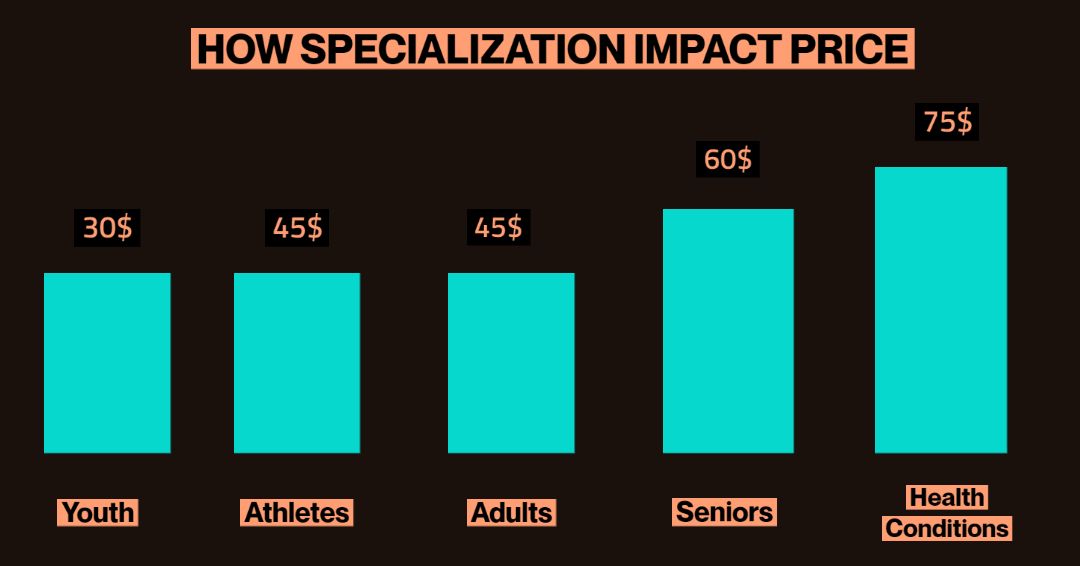
Ultimately, the goal is to make clients feel motivated to commit to reaching their health goals over a longer period with your guidance. As you gain education and experience, raise your rates. Make sure to always give clients prior notice when altering the fee structure, explaining how you’ve gained more experience or knowledge to provide them with an even better coaching experience!
Here's a pricing template to help you figure how to best package your offering based on these factors,
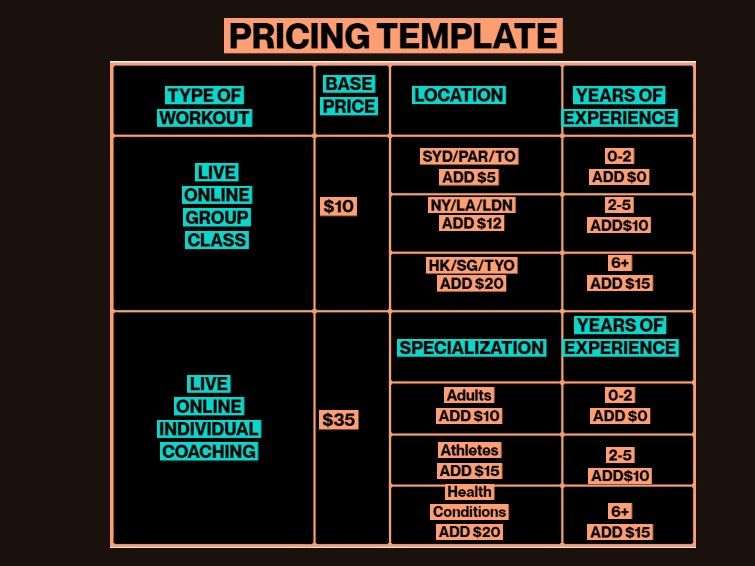
If you’re feeling hesitant about launching your online business, Finally make sure to experiment, experiment, experiment and test the market till you find that clients are satisfied and you’re making profit too! Most importantly, never stop learning, and offering value, the results are sure to follow!
To summarise,
Step #1: Identify Your Niche
Test different versions of your classes and redefine your niche for an online format if required so you can gauge participant engagement and remain ahead of the competition.
Step #2: Draw up a Schedule
Find a way to deliver an effective workout within a condensed time frame, at the right frequency for your type of workout to maintain client consistency and commitment
Step #3: Decide on a Pricing Structure
Use the data and pricing table to gain clarity on how to price your online offering; experience, qualifications, specialization and location are the four main factors that impact price.

